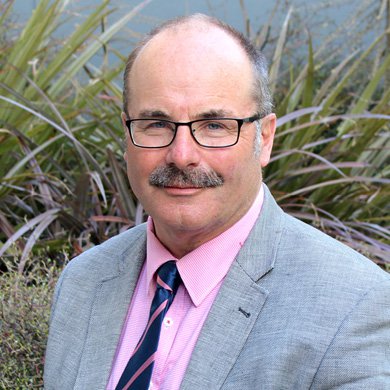16th September 2019 By Contributor
The Department of Conservation’s director-general, Lou Sanson, urges the public to get out and get involved in nature to celebrate 50 years of Conservation Week (14-22 September).

Lou Sanson
At DOC we are reflecting on five decades of amazing people who have saved species, restored habitats and gone that extra mile for conservation. These champions of conservation are an inspiration for the next 50 years of action for conservation.
Nature needs us. Now more than ever.
New Zealand’s wildlife is in crisis with more than 4,000 of our native animals and plants threatened or at risk. Introduced predators like rats, stoats and possums are the biggest threat to our plants and wildlife alongside habitat loss and a changing climate.
Faced with these significant challenges, I see hope in the tourism sector.
There is a strong desire within the industry to form part of the solution, embrace self-awareness, sustainability and guardianship of our natural heritage. The charge is admirably being led by Tourism Industry Aotearoa through the New Zealand Tourism Sustainability Commitment. Operators big and small are showing others what can be done to ensure our nature, and so our industry, is protected and enhanced over time. This approach can be a very successful point of difference for businesses – tapping into a growing market keen to minimise impacts, give back to nature and find meaningful connection on their travels.
Alongside this movement within the industry, through the International Visitor Conservation and Tourism Levy (IVL) we now have a significant funding stream (a predicted $450 million over the next five years, administered between MBIE and DOC) to address the challenges faced by conservation and tourism. The IVL is a direct and practical step to achieving the Tourism Strategy’s vision – that New Zealand is enriched by sustainable tourism growth.
The IVL recognises the value of our environment to the tourism sector. It provides a means by which visitors can contribute to tourism infrastructure, and enable critical additional conservation work to protect our native species and habitats.
As we’ve seen with the initial IVL investment announcements, this money both enables long-term visitor management planning in key destinations such as Milford and glacier country, while getting to the very heart of some of our biggest conservation challenges. This will give visitors confidence that the money is being invested constructively, and the feeling that they are contributing to protecting New Zealand’s native species and the places they enjoy.
From a conservation perspective, the IVL funding will enable us to take crucial steps in our kakapo recovery work; in eradicating pests from Aoraki and the upper Mackenzie Basin (protecting the world’s rarest wading bird – kakī); and in conserving, understanding and cherishing our heritage through work at historic sites such as Ruapekapeka Pā.
Investment in Maukahuka – Auckland Island has the potential to be a game-changer for New Zealand predator removal work. Eradicating mammalian pests from Auckland Island would complete the ambitious vision of a ‘pest-free’ New Zealand Subantarctic World Heritage site, taking us a step closer to New Zealand’s Predator Free 2050 goal.
Such investments in conservation are worthwhile and necessary in their own right. They will also create a positive feedback loop, where the richness of our environment and the quality of visitor experiences further enhance New Zealand’s reputation as a tourist destination.
I am heartened by the direction of the sector, by all the great and innovative work that is happening across New Zealand. In a challenging climate, Conservation Week is a reminder our actions, big or small, can and do make a difference: www.doc.govt.nz/conservationweek